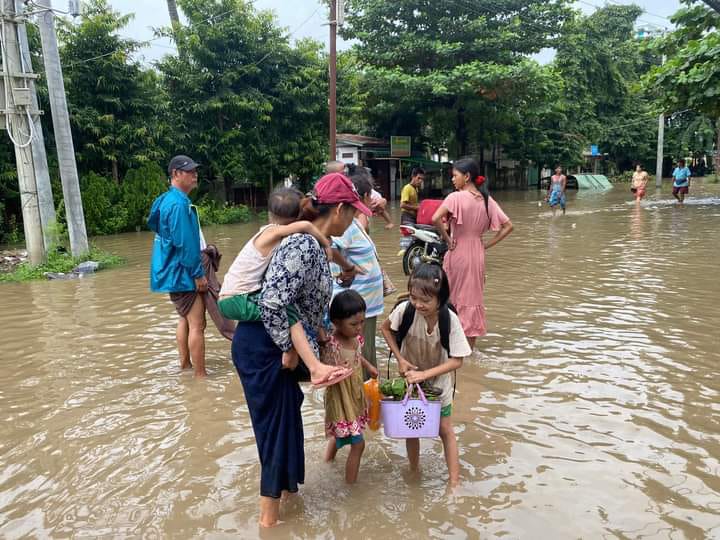Crushed by civil war, Myanmar gets badly hit by Typhoon Yagi
As connectivity is restored, the extent of the devastation becomes clear. The dioceses of Taunggyi and Kengtung (Shan State) are completely cut off. Local sources say the country’s military junta lacks the resources to deal with the situation and people are left to fend for themselves. Meanwhile, the Fondazione PIME has reactivated its Myanmar Emergency fund.
Yangon (AsiaNews) – As the clock ticks away, the extent of the devastation caused by Typhoon Yagi in Myanmar becomes clearer, even more since the country has been on its knees for over three years due to its ongoing civil war.
Given the situation, Myanmar's ruling military junta has asked the international community for help in coping with the consequences of the calamity, which has hit much of Southeast Asia, killing several hundred people.
Myanmar’s military rulers, who power in a coup in February 2021, reported just over 200 deaths and more than 300,000 displaced, but the real numbers are much higher, local sources say.
The most affected states are in the east, in particular Kachin, Shan, and Kayah, where hundreds of thousands of people have already been displaced by the civil war, along with the Bago and Magwe regions.
Phone services were restored only today, local sources say, but there is still no power in many areas.
In the past week, as the typhoon punched its way across the country, flooded areas, like the dioceses of Taunggyi and Kengtung, in Shan State, found themselves completely cut off.
The real extent of the damage is just emerging. Landslides hit Taunggyi, which is located on higher ground, but the areas with the most damage are those in the lowlands near Inle Lake.
"Families have lost everything, the carcasses of dead animals are left, and children are beginning to get sick, especially with diarrhoea" due to stagnant water, sources say.
It is estimated that at least 260,000 hectares of cropland have been devastated, leaving local communities without the means to survive amid the civil war, which has been raging for three years.
According to Radio Free Asia, since last Wednesday, at least 20,000 people from 170 villages have fled their homes around Inle Lake, with one resident saying that they had never experienced "such a severe flood before."
Meanwhile, hundreds of people have turned to the parishes asking for food and aid.
The situation is different in Yangon, where the water level of rivers has risen, but this is normal.
“In the outskirts, homes have been flooded because they are made of bamboo and there is no type of infrastructure," report some local aid workers. "Now we are waiting for water to drain southwards.”
Dozens of young people continue to reach the city, especially children of displaced families who had abandoned their villages because of fighting.
“The military junta has no resources, neither financial nor human, to cope with the disaster and this has exposed the fragility of the system and highlighted that the people of Myanmar are, once again, essentially left to fend for themselves," others lament.
Although the emergency was announced, the military "do not know whom to send to help the population because they are all already engaged in the fighting". This probably explains why the head of the military junta, General Min Aung Hlaing, felt compelled to appeal to the international community.
"It's not just a matter of lack of will, financial resources are depleted," sources add.
Many fear a repeat of what happened after cyclone Mocha in Rakhine State in May last year, when the military blocked access to flooded areas, preventing the arrival of aid.
“That said, it would be difficult for the same situation to be repeated in Taunggyi, where there are also militias close to the army."
The Special Advisory Council for Myanmar (SAC-M), a group of experts monitoring the situation in the country since the outbreak of the conflict, has urged Myanmar’s neighbours to open their borders to allow aid in.
It also asked international cooperation agencies to work with resistance forces, who, in addition to having control over several parts of Myanmar’s territory, “have experience in administering humanitarian assistance to people in their areas”.
The military junta, by contrast, lacks “the capacity to ensure aid is delivered to the majority of those in dire need," the Council says.
Given the huge devastation caused by this catastrophe, the Fondazione PIME is reactivating its Myanmar Emergency fund, which has been supporting war victims through local channels for three years. It is possible to donate to meet the new needs created by the flood. Click here for online and other methods of payment.







.png)










